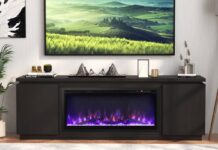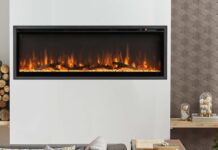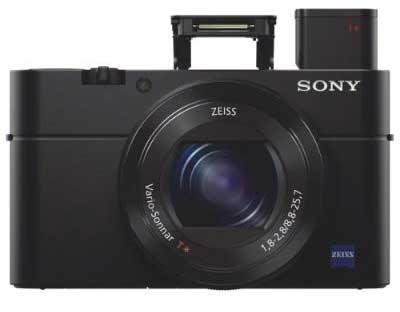 Modern DSLRs are incredibly powerful cameras, capable of producing amazing images even in the most challenging situations. But the big drawback, and the reason many owners don’t carry their’s around all the time, is that they are big and heavy. A lot of people are happy to use their smartphones instead, and indeed the quality of the images and the feature sets on the latest phones are pretty impressive.
Modern DSLRs are incredibly powerful cameras, capable of producing amazing images even in the most challenging situations. But the big drawback, and the reason many owners don’t carry their’s around all the time, is that they are big and heavy. A lot of people are happy to use their smartphones instead, and indeed the quality of the images and the feature sets on the latest phones are pretty impressive.
Nevertheless, there are still good reasons to own a real camera.
For example, the sensor in a smartphone is very small, and small sensors don’t produce great results in low-light conditions. They also yield small files which means you can only make small prints from them, at least if you want your prints to look good. I often find that the lag time, the delay between the moment you decide to shoot and the phone being ready, is a problem. Also the battery life on a dedicated camera is much better than that of a smartphone.
Today I’m going to look at three alternatives to the smartphone and the DSLR, cameras that are truly pocketable and capable of producing wonderful images.
The first camera I want to recommend is a camera I had the good fortune to review last year; the Sony RX100 M3 (shown above). This thing really is a pocket rocket, a diminutive unit with enough features to keep even the most demanding of photographers happy. It carries a 1 inch sensor, which is quite a bit smaller than the APS-C sensor you’ll find in a entry-level DSLR, but the image quality is fantastic nonetheless. It’s not the prettiest camera in the world, and Sony hasn’t gone for the retro styling that, for example, Fujifilm and Olympus are fond of. But looks aren’t everything, right?
Unusually for a camera of this size, the RX100 M3 has a manual focus ring on the lens, and one the features I really liked is when you shoot in autofocus mode, that control ring can instead be used to change the aperture. Purists love features like this. My personal favourite feature though, was the ability to connect to your smartphone via wi-fi and get a live feed from the camera. From your phone you can activate the shutter and control the zoom. This is handy if you want to shoot group shots and be in them at the same time. I liked it because I was able to shoot very stealthy street photos while people around me assumed I was checking my email or whatever.
Another innovative feature of the RX100 M3 was the fact that you can charge it via USB. I expect to see more and more manufacturers going down this route, but credit to Sony for taking the lead. Not only is USB really convenient, it also means you can download your images and charge the camera at the same time. And when you’re travelling it means you don’t have to worry about plug adapters and all that.
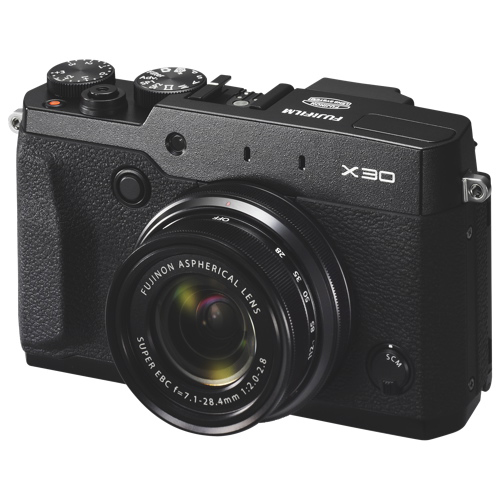 The next camera I want to look at is the Fujifilm X30. Fujifilm has garnered tons of praise and won a legion of new fans with their X-Series of cameras. I have to admit I am one of those fans. I initially fell for the beautiful retro styling, but I also discovered that the functionality of these cameras is only superseded by the image quality. Fujifilm went all out in trying to give photographers as much manual control as possible, so instead of a minimal design with settings consigned to menus, you get the controls you need right at your fingertips. And yes, the image quality is absolutely wonderful. The sensor on the X30 is just 2/3 of an inch, but it’s a Fujifilm X-Trans sensor, so expect great things.
The next camera I want to look at is the Fujifilm X30. Fujifilm has garnered tons of praise and won a legion of new fans with their X-Series of cameras. I have to admit I am one of those fans. I initially fell for the beautiful retro styling, but I also discovered that the functionality of these cameras is only superseded by the image quality. Fujifilm went all out in trying to give photographers as much manual control as possible, so instead of a minimal design with settings consigned to menus, you get the controls you need right at your fingertips. And yes, the image quality is absolutely wonderful. The sensor on the X30 is just 2/3 of an inch, but it’s a Fujifilm X-Trans sensor, so expect great things.
I neglected to mention that the RX100 M3 has a electronic viewfinder that you can actually put your eye to (something purists like to be able to do). The X30 also comes with an electronic viewfinder. And like the RX100 M3 you also get a control ring on the lens, but this time it is dedicated to controlling settings, not focus. You can change aperture and shutter speed, or you can customise it to control a number of other options, like ISO or white balance.
The X30 also has great wi-fi capabilities, which give you that live preview on your smartphone, but as well as the shutter release function you can also change your focus point, aperture, exposure compensation, ISO and more besides. Now that’s what I call remote control.
One of the things Fujifilm really wanted to improve with the X30 was battery life; the camera is capable of shooting a very impressive 470 shots per charge.
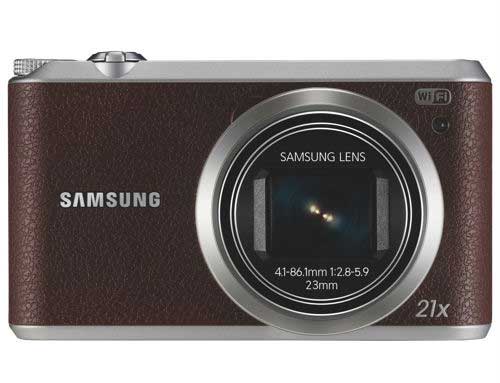 The final camera I want to feature is the Samsung WB350 Smart Camera. I choose three cameras today and I purposely took three different price points. Both the RX100 M3 and the X30 are amazing cameras, but they don’t represent small investments. The WB350 has a host of great features at a really affordable price.
The final camera I want to feature is the Samsung WB350 Smart Camera. I choose three cameras today and I purposely took three different price points. Both the RX100 M3 and the X30 are amazing cameras, but they don’t represent small investments. The WB350 has a host of great features at a really affordable price.
Samsung is leader when it comes ‘smart’ cameras, so it’s no surprise that the WB350 has those great remote shooting features that the two previous cameras have. It also comes with a touchscreen, which is still a fairly uncommon feature on a camera, despite the fact that we had it on phones for years now. The WB350 also has onboard apps to allow you to share your images to your favourite social media or photo sharing sites. You can also instantly share your images with up to four other devices simultaneously, so that you don’t have to go through the sharing process repeatedly. It has very impressive 21x optical zoom, which will allow you to get shots you could never dream of getting with your phone.
You might have gathered by now that I have a penchant for good-looking cameras, and yes, the WB350 looks great as well, particularly the brown model, although it is available in four other colours too.
Those are just a few of the compact cameras available on BestBuy.ca. Maybe you have a favourite that I didn’t mention – feel free to leave a comment and let me know!

